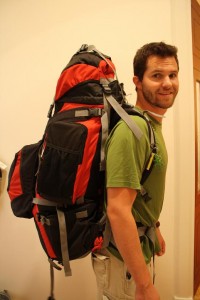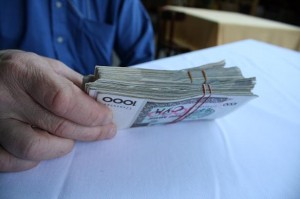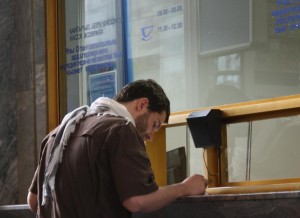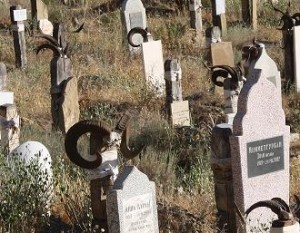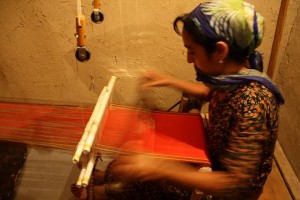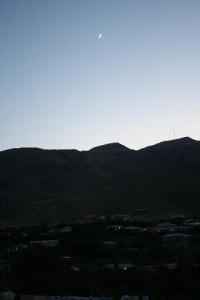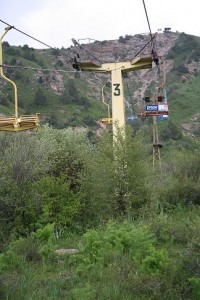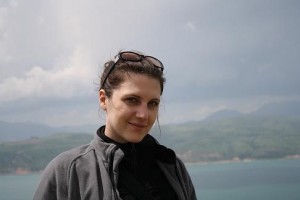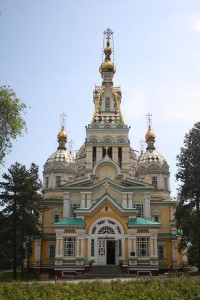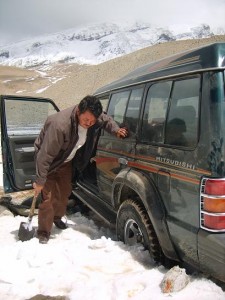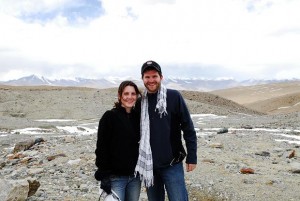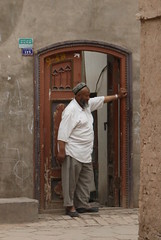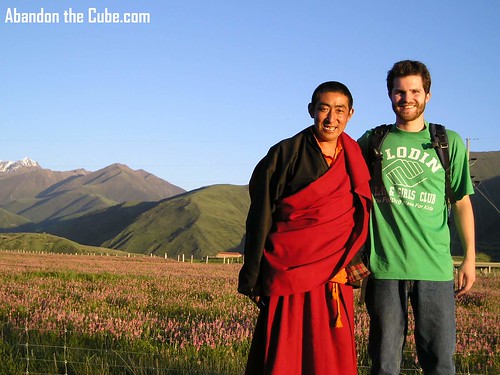How to Take the Caspian Sea Ferry
Here is the process you must follow when trying to get a ferry, since many people want this information and no one else provides it in one place:

- The Trans-Caspian Akademik
1) Put your name on the list as soon as you arrive. The list is a little notebook sitting on the counter in the ticket office. If it isn’t there, ask around until someone gets it for you.
2) After the ticket window is opened (only when a ferry if fully loaded with cargo and the Captain’s lists arrive) you will be issued a coupon. This is NOT a ticket. This simply means you were on one of the lists and deserve a spot on a ship.
3) Take your coupon to a nearby window (unmarked, but you’ll see a line of other passengers forming) where two border guards will take your passport information for their exit records.
4) Go to the waiting room and get in line to go through customs. Despite being in line, the guards come out and point at who they want to process next, don’t be offended, they take the ones who look hard to process first.
5) Once behind the white wall that separates the custom’s process from the waiting room, give your passport again to the officer waiting at a table inside the door.
6) From there, guards will usher you to a conveyor belt where your bags will be scanned and searched, they will weigh heavy-looking bags.
7) Confusingly, you need to hand your passport to a man in a window-booth across from the conveyor belt, so put your bags down and prepare to wait; here you will be de-registering from Turkmenistan. They will take your registration card out of your passport, and give you an exit stamp. Do not leave the country without it or you will be denied entry to your next country.
8) Follow the green line on the floor out into the port. Guards will be stationed to usher you ever 100m or so to an awaiting vessel. Follow their direction.
9) Once you step onto a ship, you’ll be surprised at how rough the accommodations will be. Someone will demand your

- Our Whole Bathroom, with no running water, had been used as a Toilet – sink, shower, and floor.
passport and the passage fee. It is safe to give them your passport, they need them to log who is on the ship, and having done ferry services without any reported incidents of passport theft, it will be safe. The fee is supposed to be $90 USD per person, but we ended up paying $100, which they said we could pay or else get off the boat. The fee includes a room.
10) Follow someone on the ship to the passenger quarters. These usually contain a bunk (or up to four in a room) and a bathroom with no running water and petrified turds in a broken toilet. Don’t use your facilities, use the public ones down the hall. Don’t complain about your room because they are all equally bad. Even though you are boarded, the ferry might not leave for several hours. Don’t ask why, you’ll get no answer anyway as no one knows anything on board the ship. In the same vein, don’t bother asking when you’ll arrive or how long the journey is. Some take 12 hours, ours took closer to 24, others report 16-18 hour trips.
11) Once you arrive in Baku, the process to disembark and go through customs is very efficient, but a lengthily process. It took our group over four hours to go through customs, start to finish. As a tip, do not mention Armenia, as the two countries are at war. Once you are processed and in the country with your entry stamp, you can hire a cab or you can simply walk away from the docks into town.
Good luck! By the way, the process is the same whether you are going from Turkmenbashi to Baku or vice versa.

